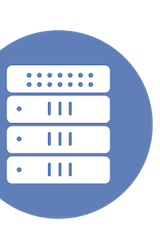|
|
This video is part of the appearance, “Data Infrastructure Modernization with NetApp“. It was recorded as part of Tech Field Day Experience at NetApp INSIGHT 2025 at 8:45-9:30 on October 16, 2025.
Watch on YouTube
Watch on Vimeo
Infrastructure modernization today goes beyond simply upgrading storage. It’s the cornerstone of breaking down silos and establishing a unified data foundation that drives innovation across your organization. Whether you’re optimizing hybrid operations, enhancing cyber resilience, or accelerating your AI journey, this featured session will demonstrate how an intelligent data infrastructure, such as the NetApp data platform, offers unparalleled simplicity, security, and efficiency for all your workloads.
At Tech Field Day Experience at NetApp INSIGHT 2025, James Kwon and Pranoop Erasani introduced AFX, an advanced architecture within the NetApp data platform, designed to meet the growing demands of AI and other high-performance workloads. They explained the project’s origin, focusing on how traditional ONTAP architectures struggled to keep pace with the rapid computational advancements of GPUs. AFX breaks from the high-availability (HA) pair constraints by disaggregating storage and compute components, thereby allowing independent scaling of capacity and performance. This approach offers greater flexibility to customers, who can now customize infrastructure growth based on workload requirements rather than being locked into synchronized hardware upgrades.
The AFX design introduces a single storage pool architecture, eliminating redundant storage layers such as aggregates and simplifying both the user experience and storage management. It supports ONTAP interoperability and maintains near-complete feature parity, including capabilities like SnapMirror and FlexGroup, while delivering automatic rebalancing and volume re-hosting for seamless operation. While three separate cluster “personalities”—unified, block-only, and disaggregated—are maintained, features like zero-copy volume moves and simplified expansion reinforce the efficiency and adaptability of AFX. The new system is ideal for AI workloads given its throughput optimization, yet flexibility in design paves the way for use cases in EDA, HPC, and other data-intensive sectors. Though not yet a wholesale replacement for unified ONTAP, AFX represents a foundational step toward universally modern, scalable, and intelligent storage solutions.
Personnel: James Kwon, Pranoop Erasani








